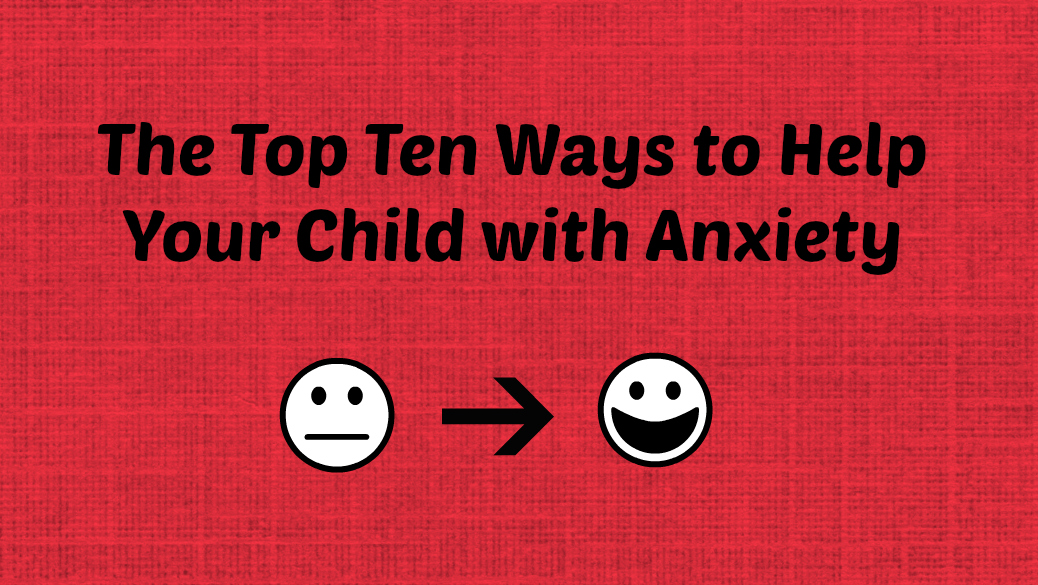-
The Nine Red Flags of Generalized Anxiety Disorder in Kids and Teens
Everyone worries at times, including kids. Many kids and teens worry about topics such as school, athletic performance, or their health. Sometimes worries are more significant than this, and they cause problems for the child. This is based on the amount of time worrying and the effects of the worrying on school, their behavior, and their health.
Worry and anxiety that cause problems in a person’s life are the main symptoms of Generalized Anxiety Disorder (GAD). If this sounds like your child, see if any of the red flags listed below sound like your child. Of course, the only way to know for sure is to go to a qualified health professional and talk with them about the possibility. However, you as a parent can be aware of these signs and symptoms of GAD so that you can make that appointment and help your child.
Red Flag #1: Your child worries more days than not, and this has been happening for several months. Their worries are out of proportion to the actual threat or danger of the situation. For example, they may worry about war, finances, death, or their health every day even though there’s no immediate reason for them to. In order to be diagnosed with GAD, your child must worry about multiple topics – not just one. If there’s only one specific thing that your child constantly worries about, it’s probably not GAD. (I’ll cover those kinds of worries in a future post.)
Red Flag #2: You have tried to help your child control their worry, and this has not been successful. Reason and logic don’t seem to make a difference to them or help them stop worrying.
Red Flag #3: Your child is experiencing physical symptoms such as headaches, stomachaches, nausea, restlessness, tiredness, or muscle tension. They may frequently be too sick to go to school. When a child is experiencing anxiety, their body becomes tense and vigilant because it is constantly preparing for future danger. Experiencing this daily can cause a lot of bodily aches and pains.
Red Flag #4: Your child has started having difficulty concentrating because they can’t stop worrying. Kids with anxiety are sometimes misdiagnosed as having an attention-related disorder because of this. For example, your child may be so stressed about what grade they are going to get on a test that they can’t focus enough on the test to answer the questions correctly. In this example, the root cause of the difficulty with attention is actually high anxiety. (Hint: If there’s truly an attention -related disorder, the attention problems would have been happening way before your child started worrying so much.) If a parent comes to me saying their child has an attention problem, the first thing I check is to see if it might be anxiety!
Red Flag #5: Your child is very self-critical. They may have exceptionally high standards for themselves that would be difficult for anyone to meet. They may be seen as a “perfectionist” by others.
Red Flag #6: Your child is having trouble sleeping. They may have difficulty falling asleep, staying asleep, or have frequent nightmares. Usually they are either worrying about things or they feel like their brain “can’t turn off” enough to fall asleep.
Red Flag #7: Your child avoids many activities they used to enjoy due to worrying. They may not want to go to friend’s houses or go to a new place.
Red Flag #8: Your child cries or becomes angry very easily in stressful situations or when worrying about the future.
Red Flag #9: These worries are causing your child difficulty in their daily life. For example, their friends may not want to spend time with them anymore due to their excessive worrying. Their grades may be slipping due to worrying during class or stressing about their performance.
Does your child experience any of these red flags? If so, make an appointment with a qualified health professional and share your concerns with them. Then click here to read about the top ten ways to help your child with anxiety.














[…] The Nine Red Flags of Generalized Anxiety Disorder in Kids and Teens […]
[…] The Nine Red Flags of Generalized Anxiety Disorder in Kids and Teens […]
[…] The Nine Red Flags of Generalized Anxiety Disorder in Kids and Teens […]